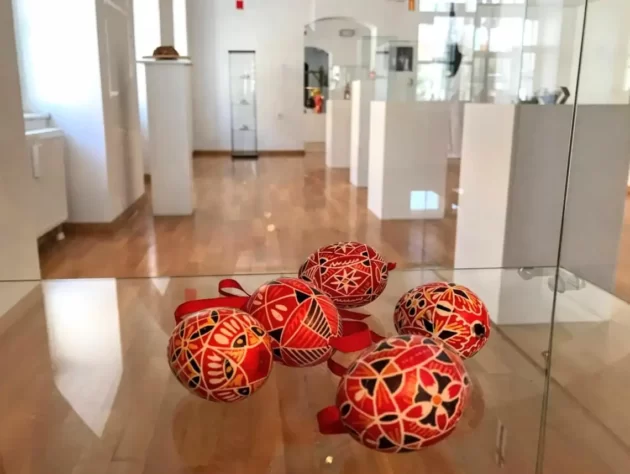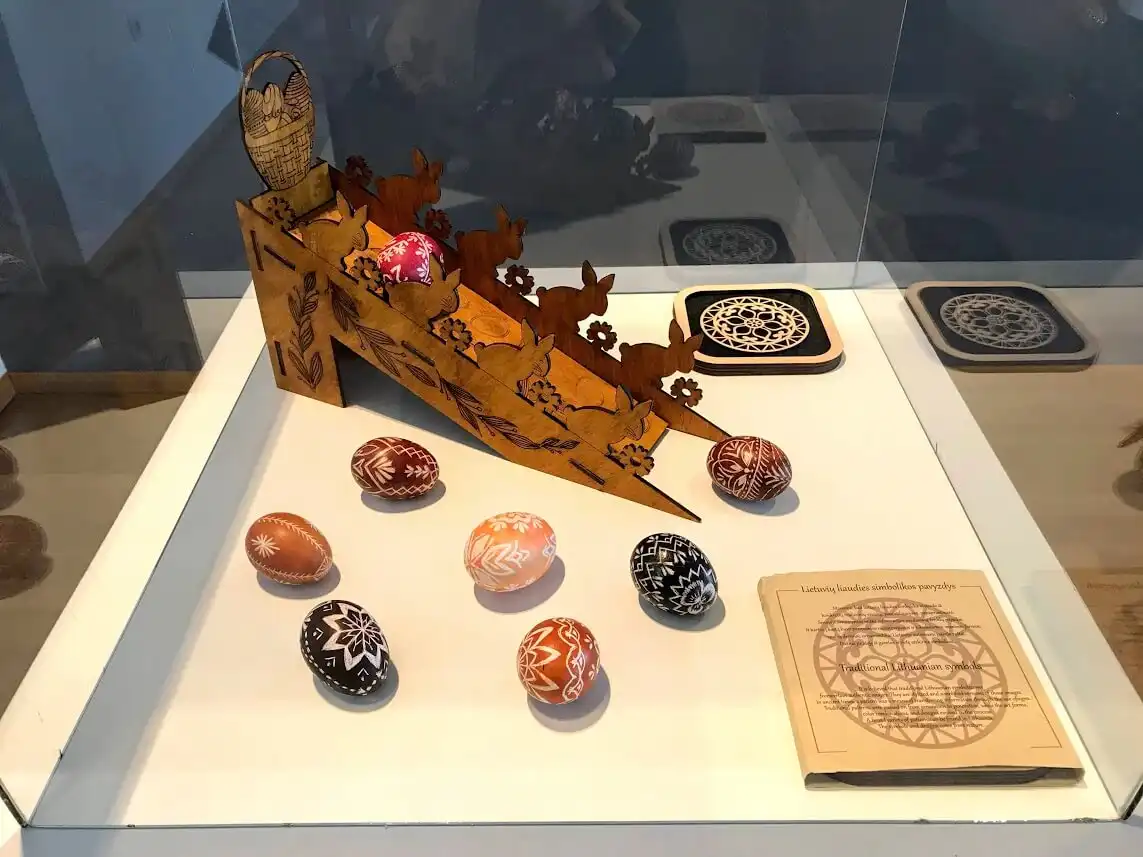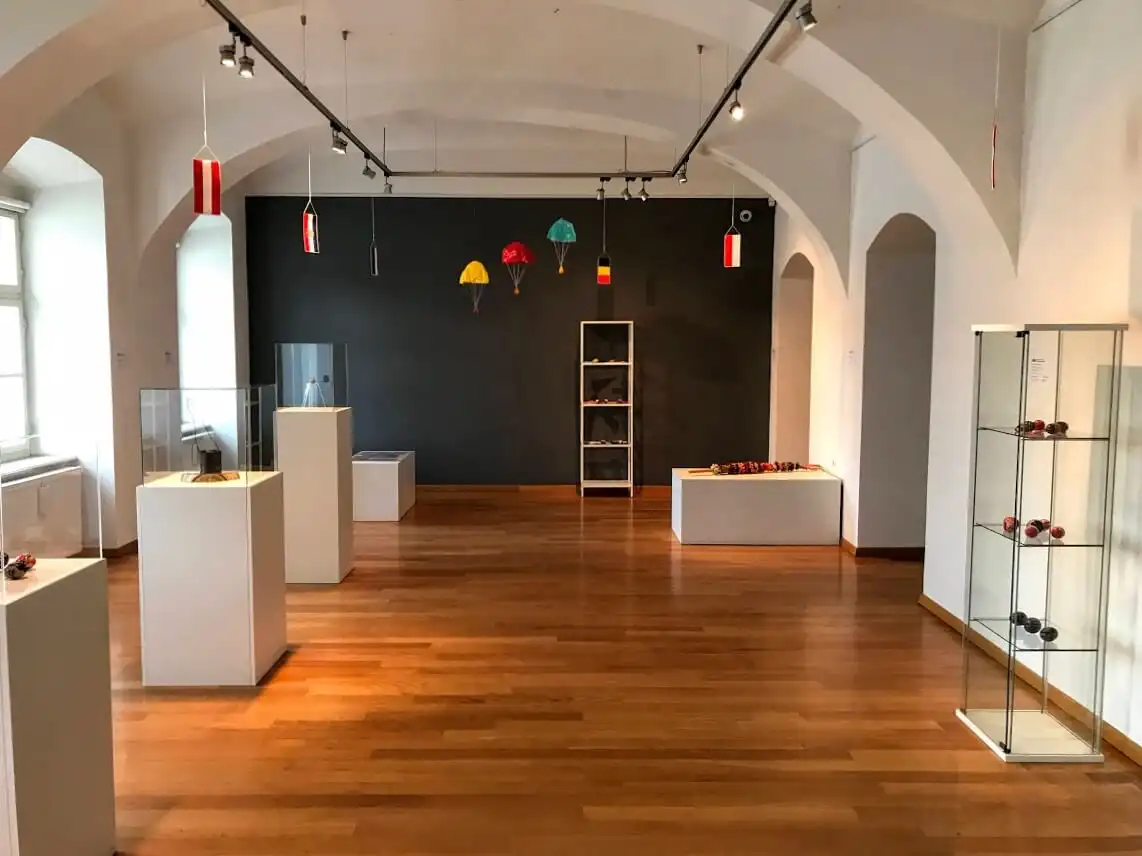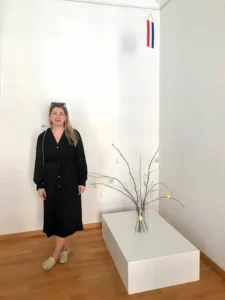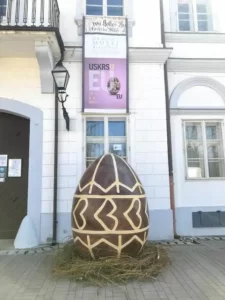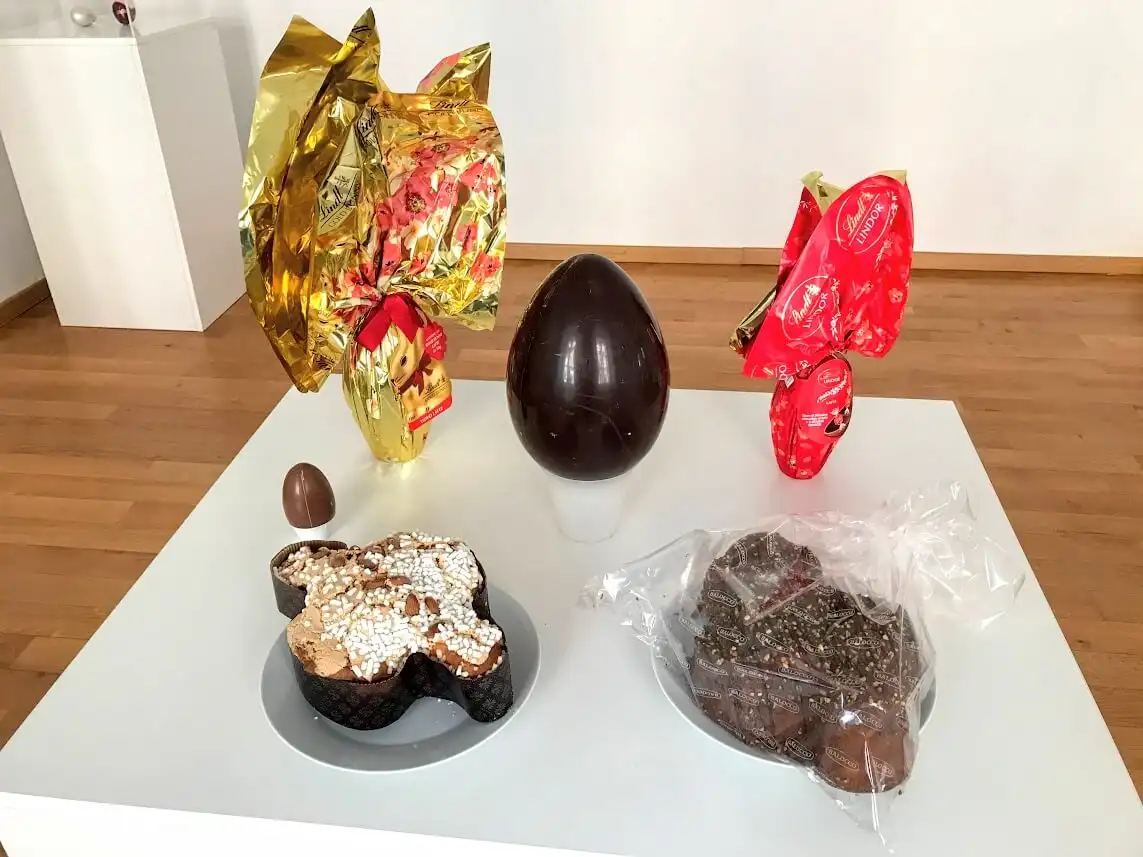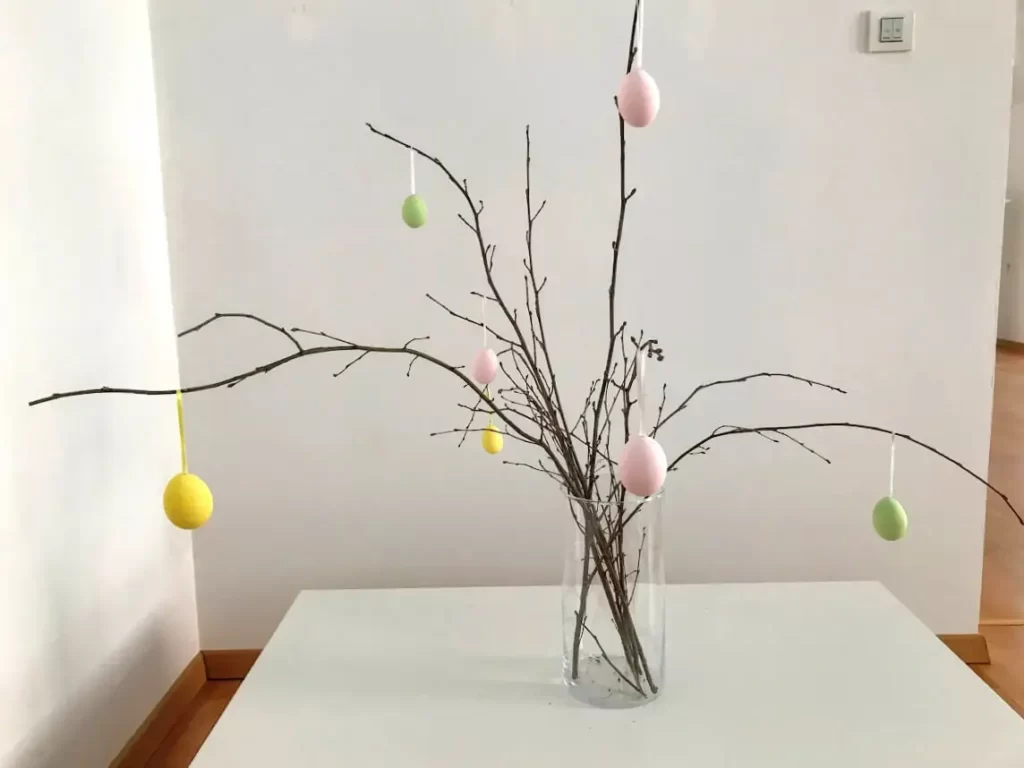Easter traditions in Europe are as diverse as the countries on the Old Continent themselves. From an egg hunt in England, decorating Easter trees in Germany, Austria or the Netherlands, colouring eggs in central and eastern Europe to numerous religious processions in Spain or Italy. They represent all the treasure of European culture in such a lovely way.
Easter Traditions in Europe
There are so many unusual Easter traditions in Europe it’s impossible to write about all of them. Very often, not even a country, but each region, town or village has some unique traditions and customs celebrated on that holiday.
⤷ Read more: The history behind Fabergé Eggs
History of Easter celebrations in Europe
On Easter, Christians are celebrating the resurrection of Jesus Christ. And it’s considered to be the most important Christian holiday.
In the 4th century, it was decided Easter will be celebrated each year on the first Sunday after the full moon following the Spring equinox. That’s why it’s not observed on a specific date each year, but it can fall on any Sunday between March 25th and April 25th.
Like many Christian celebrations, some of its origins are from the pagan time. Back then, people celebrated the beginning of spring by worshipping the goddess of spring, Eostre, in England. Even the name of the holiday shows the connection with the pre-Christian celebration: Eostre – Easter.
The majority of symbols appearing during the Easter celebration are also linked to celebrating new life and spring. And later on, started to be associated with the resurrection of Christ. Chicken, bunnies and eggs are just the most popular ones.
Eggs were decorated back in prehistoric times. Back then, mostly ostrich eggs were decorated. Only in Middle Ages, people started to paint chicken and goose eggs. The oldest decorated Easter eggs were found in Croatia and Ukraine, and they are originating from the 15th century.
However, most of today’s Easter traditions in Europe are from a newer date. Chocolate eggs and bunnies, or egg hunts, are mainly from the 19th century.
⤷ TIP: Ukraine is home to the Easter Eggs Museum – it’s located in the town of Kolomyia.
Easter in EU exhibition
I was encouraged to research these traditions after I visited an exhibition Easter in the EU organised in the Bjelovar City Museum in Croatia. I actually participated in it and have prepared a section about the Easter traditions in the Netherlands.
While I was looking for origins of some Dutch customs, I got interested in exploring more of this part of European culture. And since you liked an article about Christmas traditions in Europe very much, I thought you might like this one, too.
⤷ TIP: Watch a video from the exhibition on a link here. You can see exhibits linked to Easter traditions from all the EU countries in it.
How is Easter celebrated in Europe
There are numerous amazing Easter traditions in Europe, it’s impossible to put them all in one article. Here is a selection of the most interesting ones. However, to see more of some customs, check out the video about Easter in Europe below:
Easter traditions in Germany
In Germany, on Easter, people are attending special festive services in churches decorated with spring flowers.
The central celebration is happening during a nice Easter breakfast that’s celebrated in homes with families. After exchanging some gifts, a nice breakfast is organised. Special food is served during it: eggs, sweet bread decorated with frosting and candy eggs, cookies made in the shape of a chicken, a lamb or eggs, butter in the form of a lamb etc.
Many families, organisations and companies are preparing Easter egg hunts that are great fun for kids. On Saturday before Easter, in the northern part of the country, people light Easter fires late in the evening.
⤷ Read more: What to see in Garmisch-Partenkirchen
Easter traditions in France
One of the most famous Easter traditions in France is the story about the Easter bells. On Thursday before that holiday, all the church bells in France are silenced for three days. The legend says they fly to Rome, where the Pope has to bless them. After the blessing, they begin their journey back to France. However, on their way back, the bells bring some eggs with them and hide them in the gardens of houses in France.
Because of that legend, many egg hunts are organised around the country. Towns and villages organise them in local parks. At the beginning of that Easter custom, eggs were hard-boiled. However, today they are replaced by chocolate eggs.
⤷ Read more: Beautiful small towns you should visit in France
Easter traditions in Austria
Famous for its Christmas markets, it comes with no surprise one of the most popular Easter traditions in Austria are Easter markets. They open some two and a half weeks before that holiday. Mostly, decorated eggs for the Easter tree (Osterbaum) are sold on them.
The Easter tree has a similar origin as the Christmas tree. At the beginning of that tradition celebrated not only in Austria, but also in Germany and the Netherlands, the whole tree was filled with eggs, ribbons and other decoration. Nowadays, a bunch of willow branches serve as a tree, and it’s ornamented with eggs.
One of the oldest Easter customs in Austria is carrying the sacred fire. On Saturday before Easter, a massive fire is lit in front of the churches. After it is blessed, people take a bit of it and carry it home in tin containers. That fire would be put on until the following Easter. It warmed Austrian houses throughout the year.
⤷ Read more: Kaprun – A day in Austrian Alps
Easter traditions in Croatia
Many Easter customs in Croatia are similar to those in central and eastern Europe. Special ceremonies are organised in churches from Thursday to Easter Sunday. On Easter morning, people bring their food to be blessed in churches.
After that, the main event is taking place in homes of Croatian families – Easter breakfast. The meal consists of coloured eggs, spring onions, horseradish, special homemade bread and ham.
Coloured eggs are a symbol of this holiday in Croatia. Each region has its own tradition of egg colouring. But the traditional way to do it is by using some natural ingredients as colours: onion shell or dark red wine.
⤷ Read more: What to do and visit in Croatia
Easter traditions in England
The egg hunt is probably one of the most popular Easter traditions in England. Children believe it’s the Easter bunny who hides chocolate eggs around their gardens.
Some other games are organised in England during Easter time, as well. One of them is the egg and spoon race, in which the aim is to run a race while holding a hard-boiled egg on a spoon.
A special pastry that’s being prepared for this holiday is hot cross buns. Filled with raisins and currants, they are usually eaten with butter.
⤷ Read more: The best museums in London
Easter traditions in Spain
Some of the most unusual Easter traditions in Europe come from Spain. They are more religious than the ones in the north of the continent. During the whole Easter week, numerous religious processions are organised in Spain, especially in cities like Seville and Granada.
During those processions, many people are parading the streets in unique costumes. They often carry giant floats with saints on them, and many religious brotherhoods are involved in that Easter traditions.
Special festive Easter treats are also prepared during that time. The most famous are torrijas and monas de pascua.
Easter traditions in the Czech Republic
The main Easter tradition in the Czech Republic is egg colouring. It has a long tradition there.
First, Easter eggs were coloured in red and golden, but other colours were later introduced, too. One of the oldest ways of decorating them was by applying the wax, the technique is called batika.
Easter traditions in Italy
Similar as in Spain, Easter in Italy is marked by masses and numerous religious processions. Churches often have special statues of Jesus and the Virgin Mary that are paraded around the city. People participating in those processions are carrying palm and olive branches and are dressed in traditional costumes.
It comes with no surprise food is quite essential in Easter celebrations in Italy. During the festive Easter dinner, a lamb or goat, artichokes and various loaves of breads are served. The most popular ones are pannetone and colomba, a dove-shaped bread.
Nowadays, a popular custom is giving chocolate eggs as a present to family members and friends. Many specialised shops are preparing custom made chocolate eggs for their customers. Making these eggs a very thoughtful present.
⤷ TIP: The biggest ever chocolate egg was made in Italy in 2011. It was 10,39 metres high, and it weighed 7200 kilos.
Easter traditions in The Netherlands
The Netherlands is home to numerous fascinating Easter traditions. From lighting the bonfires, egg hunt on Easter morning to performing the St Matthew Passion, a famous composition by J. S. Bach, organised in many locations in the Netherlands around this holiday.
However, a tradition that’s very popular both in Dutch homes and in public places, like stores, museums or public institutions, is decorating the Easter tree – passtakken.
Easter tree is an arrangement composed of willow or hazel branches. It’s great if they already have tiny buds or leafage on them. A perfect place for it is some prominent spot in a home, like the dining table or a nice cabinet.
Branches are then decorated with different kinds of ornaments. From the small Easter eggs painted in pastel colours, chocolate eggs, chicken, bunnies or butterflies figurines, colourful feather, glittering pearls, dolls representing little girls and boys dressed in colourful clothes, small mirrors, bells or tinny cookies. All of that could be even more decorated with multicolour stripes and bows.
The way passtakken is ornamented depends entirely on personal taste. But the thing that connects all of these decorations is that they symbolise new life and change.
⤷ Read more: Dutch Golden Age heritage sites in the Netherlands
There are many more great Easter traditions in Europe, it’s impossible to include them all in one article. From decorating wells with Easter eggs in Switzerland, figolla cake in Malta to the game of rolling eggs in Lithuania. What are some of your favourite European Easter traditions? Share them with us in the comments.

